In pictures: George FitzGerald's Berlin studio
The British house producer talks gear, technique and going live
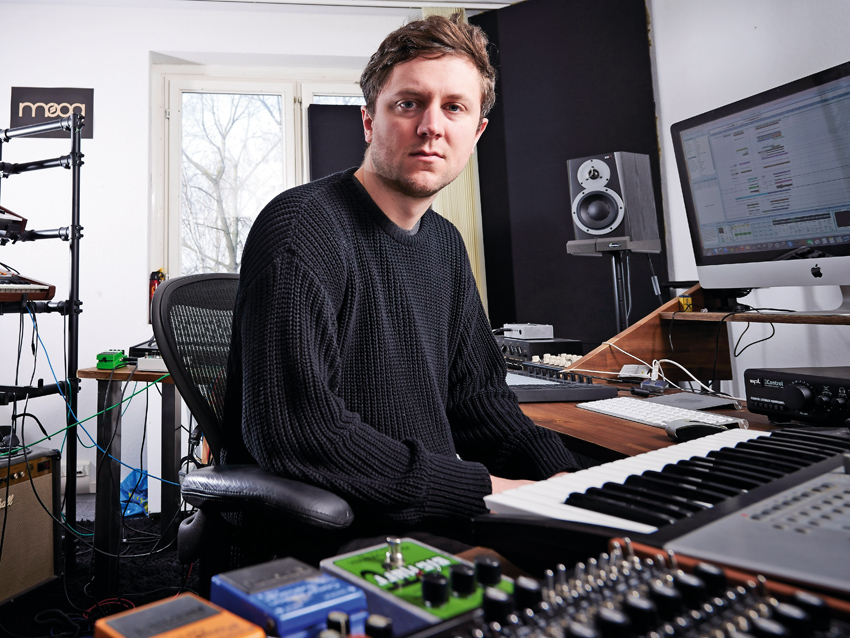
Welcome
Having been DJing since the tender age of 12, British House producer George FitzGerald first made a name for himself rising through the ranks of London’s underground club scene. Now a resident of Berlin, the past few years have seen FitzGerald making a big impression on the European club circuit with a string of well received releases on labels including Aus Music, Hotflush and his own ManMakeMusic.
Add to that his schedule of increasingly high-profile DJ bookings and a prestigious Residency slot on Radio 1, and it’s clear why he’s one of the most in-demand names in house.
However, his recent debut album, Fading Love, marks a significant shift in focus for FitzGerald. Released on Domino offshoot Double Six, the LP is more concerned with traditional song craft than club dynamics. While the lush synths and rugged drum machines of FitzGerald’s House productions are all still present and correct, the end result is more akin to the electrified emotion of classic British acts like New Order.
We caught up with the producer to find out about venturing into life beyond the DJ booth. For the full interview, check out Future Music 292 (June 2015), which is on sale now.
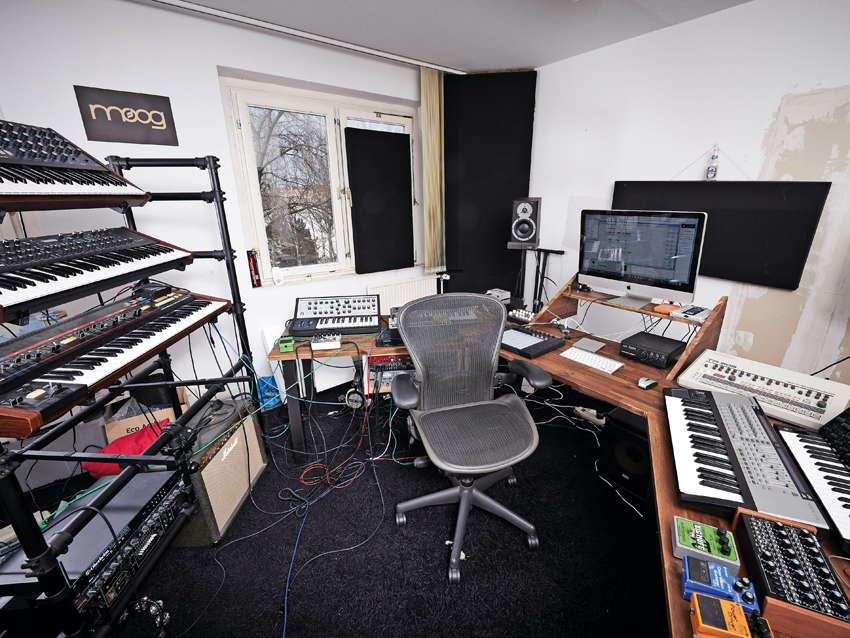
The studio
“I have a studio out in the middle of nowhere; it’s way out in the east, you have to drive out there. It’s way past anywhere you’d go as a tourist. It’s in an office building, which isn’t abandoned, but that far out east there are a lot of disused buildings that are completely fit for purpose but unused.
“So this guy just took it over - it’s about seven stories high - and he rents all of the rooms out to people to just do whatever they want with. So you get people living in there semi-legally, you get people making gabba, or Goa trance, then you’ve got bands, people practising the piano or clarinet or whatever.
“So I’m out there on the fourth floor in the middle of nowhere on an industrial lot. You have to walk about ten minutes to get to McDonalds, and that’s the closest bit of food. I don’t have any internet in there. Before then I’d always had my studio in my flat, and that was huge for me, getting out.
“As soon as I moved in there everything just started moving really quickly, and a lot better stuff started coming out. Stuff’s cheap out in Berlin, too - it’s a 24-square metre room for 200 euros a month. It’s ridiculous compared to London; most people I know there are paying, for something smaller, about a grand or something, which is insane.”
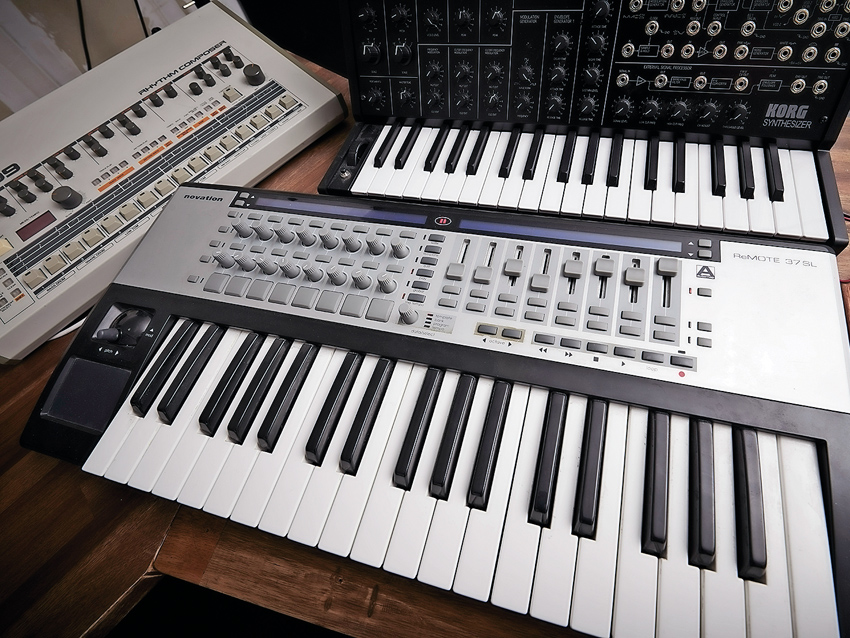
Hardware
“The things that figure mainly on [the album] are the Prophet 08, Prophet 5… there’s a 101 on basically every track, and an MS-20. Most of the drums are a 909 layered with other drum machines or self-synthesized drum sounds from a Juno-8 or Juno-60. There are a couple of other bits too, but that was the core of the sound.
“I had that in my head before I even started. I took the little advance I got from the label and put it into hardware, because that was the whole concept. Before I was semi-hardware, semi-in the box. I’m still sequencing everything from Ableton and recording into there, but I’m mostly creating sounds with hardware.
“I wanted to keep the set-up fairly static as well. I think I added the MS-20 maybe halfway through, and the Prophet 5, but everything else is completely consistent across the whole record.
“I’m a bit of a synth nerd, so I knew the sounds that I wanted and I knew what would get me that. It was almost a case of thinking of it like a band, like, ‘I want the MS-20 for my raw lead sounds, but that’s its only job, then I want the Prophet 5 for pads, and the 101 for basslines’. It pretty much stuck like that. I didn’t buy them hoping they’d work out - I’d used them before, and I owned a few of them - the Juno-60, the 101 and the Prophet 08 –-already. So I knew what I was getting into, and just wanted to expand it a little.”
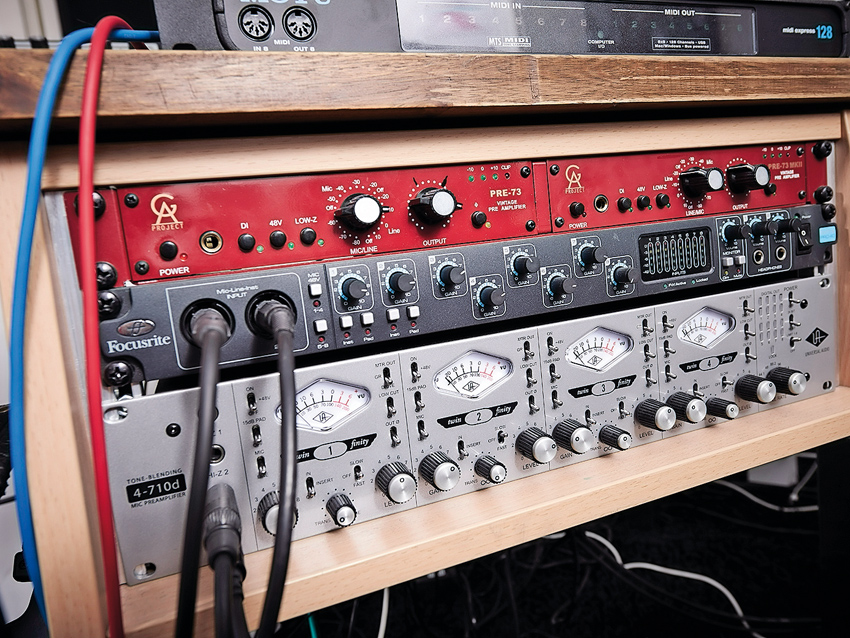
Production style
“I’ve completely changed as a producer over this period, but that’s what’s been the really fun thing. First of all, it’s been great working with people who are used to working as a band, as I’ve previously always just been a guy in a bedroom with Reason, then Ableton. You get into that mentality of sitting there and tinkering and micro-editing before things are finished. You worry a lot about each sound being perfect, but you can’t do that and actually that can end up with you making quite sterile music.
“What’s quite fun with hardware is that it’s all about hitting record, letting it run, doing a take or two then chopping up the audio. You then don’t have to add in all the extra details, as it’s all already there, those little bits of texture or little mistakes that you keep. It’s a really refreshing way of working.
“Most tracks started with long recorded takes like that, then there were long sessions of stripping back or adding to tracks. Lots of them took quite a long time actually, and went through quite a few different guises, but when it came to recording synths, it was always just a case of hitting record, doing a few takes and then sticking to what had been created, especially when you’re working with synths like the 101 or the MS-20 with no patch memory.
“I tried a few times to take photos of settings or whatever, but you’ve just got to get over working like that. If I wanted that sound again, I’d have to program it again, and it might sound slightly different, but that’s pretty cool in its own way.”
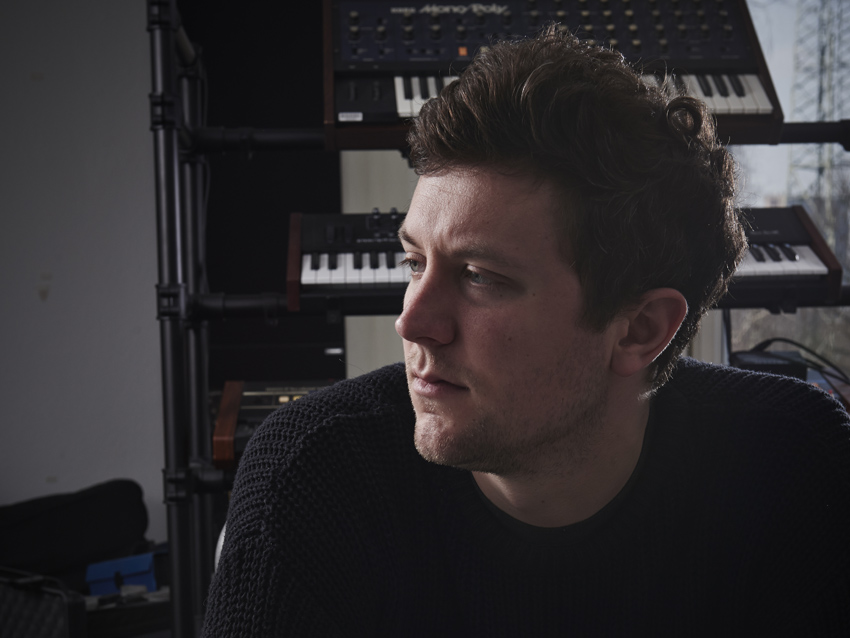
Remixing
“What I always do when someone asks me for a remix is listen to the stems and try and establish if there’s something that gives me an idea instantly. With all the remixes I do, I’ll start with an idea like that - like stripping out everything but the vocal and the bassline, or flipping it into a different kind of track.
“With Open Eye Signal, it was really clear to me. The beauty of the original is that it’s about 5% away from being this dancefloor stomper, and it’s always just pulling back from that. It’s got this beautiful unresolved energy to it. So I thought I’d strip it down a bit and give it a little more punch, just to make a fairly simple club mix of it. So that’s what I did, but if I hadn’t been able to listen through to it and instantly hear what I was going to go for, I wouldn’t have taken it on. In that track it was just the shakers, and cutting up the bassline, both of which became the main elements [of the remix].
“To be honest, with that remix, half the appeal was in getting to see how Jon [Hopkins] put the track together. I reckon a lot of people would have liked to know that. It was fascinating; it was a lot simpler than I thought it would be, but it was all constantly evolving. It was really interesting to listen to - a gold mine of great bits to work with. So that was a really easy remix to approach - I didn’t have to fight with it at all.”
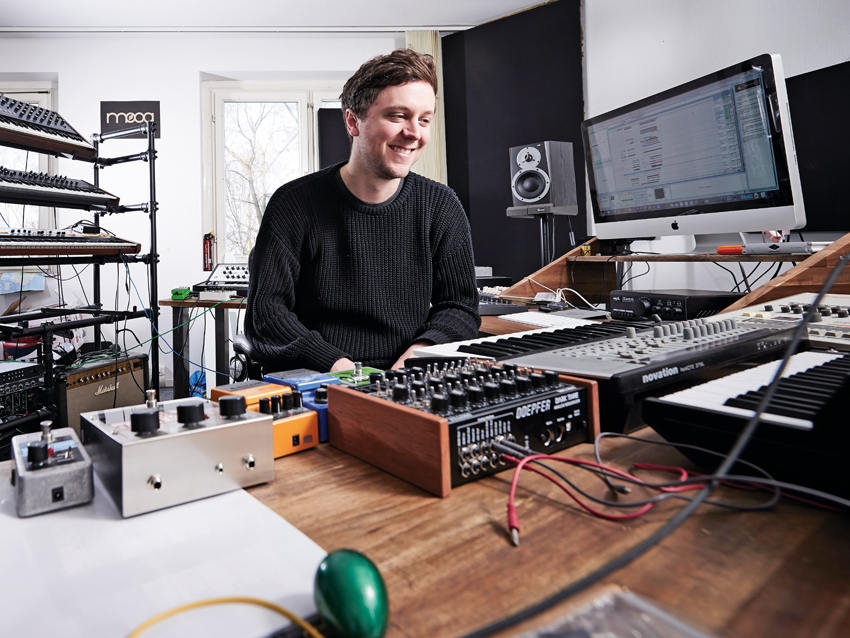
Going live
“I think the dance music live set is quite a problematic thing, and I’ve privately been quite scathing about a few people who just stand there and hit the space bar with a whole light show going on around them. Or people just standing behind Ableton with a small MIDI controller. Some artists earn a lot of money playing to thousands of people, just hitting the odd button, and that’s not ‘live’.
“If anything, it’s way easier than DJing. You don’t have to pick new tracks and don’t have to decide the order - you know you’ve an hour’s worth of stuff that’s going to fit together. It’s genuinely shocking really.
“I always promised myself I’d never go down the live route unless there was some genuinely live element. I’m not saying I’m going to have a full drum setup or whatever, but just have a couple of people on stage with me at least, and not have the instrumental on rails. The thing I’m taking my time over at the moment is finding the right kit to do that. Something that will allow me to change the structure of tracks on the fly and improvise with effects.
“I’ve just picked up an Elektron Octatrack. I think that’s going to be the thing, although I’ve not really scratched the surface with it yet. But I think I’ll use that to sequence everything - chop up the audio of the mixed tracks and then build them from the ground up, then use loads of guitar effects through a mixer, and have a couple of singers. That to me is just about live. It’s still not the same as being up on stage with a guitar, but it’s enough so that, with a straight face, I can ask people to part with money for a ticket.”
Future Music is the number one magazine for today's producers. Packed with technique and technology we'll help you make great new music. All-access artist interviews, in-depth gear reviews, essential production tutorials and much more. Every marvellous monthly edition features reliable reviews of the latest and greatest hardware and software technology and techniques, unparalleled advice, in-depth interviews, sensational free samples and so much more to improve the experience and outcome of your music-making.


